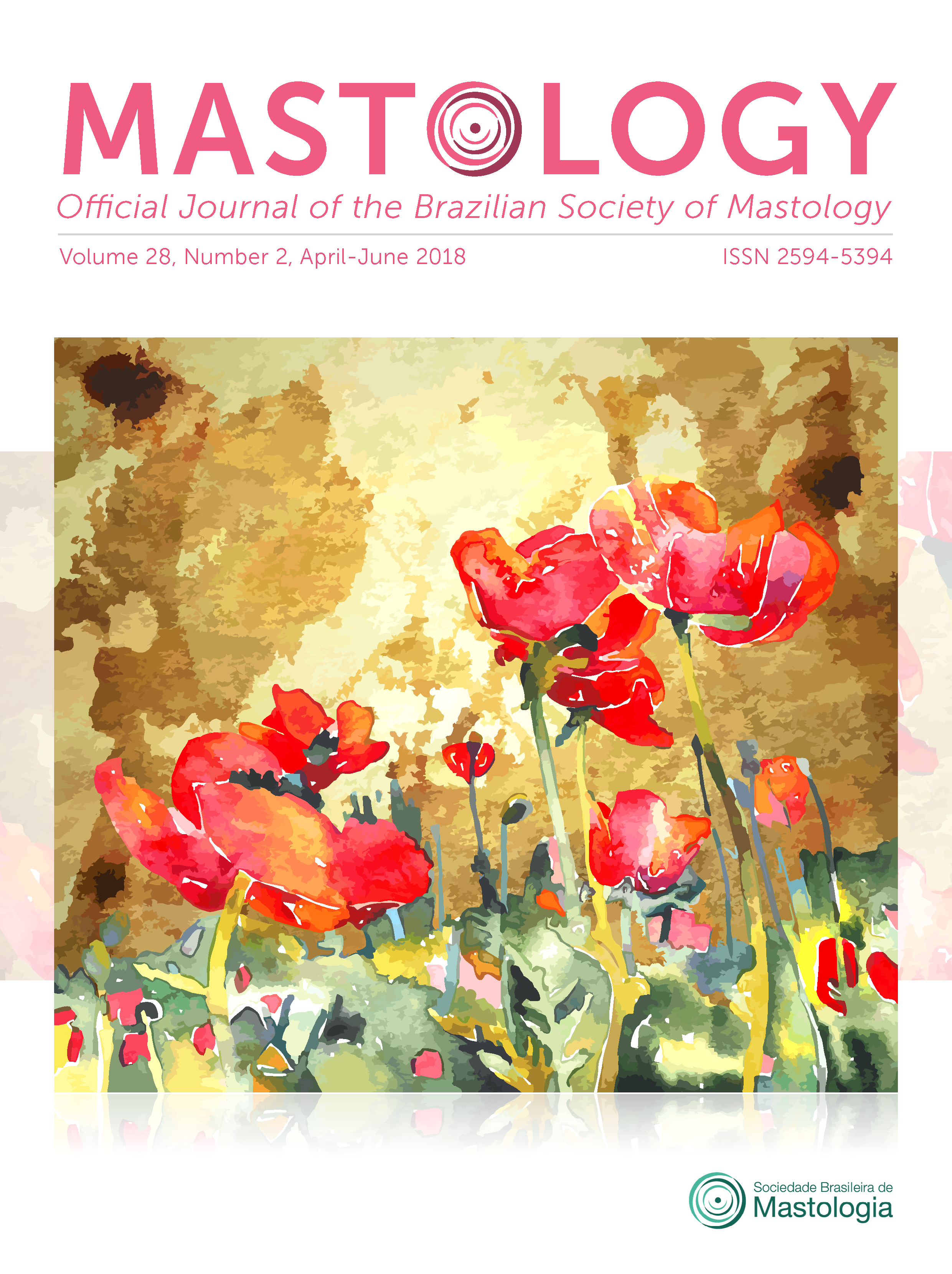NATURAL HISTORY OF DUCTAL CARCINOMA IN SITU
Keywords:
noninfiltrating intraductal carcinoma, breast neoplasms, epidemiology, incidence, carcinoma in situAbstract
Ductal carcinoma in situ (DCIS) has been detected more frequently in the last decades using the mammographic screening. The objective of the present study was to review the epidemiological aspects of DCIS. A bibliographic narrative review was carried out focusing on the following aspects: the epidemiology of DCIS to discuss subtypes; natural history; screening; and survival. It was possible to verify that the DCIS is currently considered a precursor lesion of breast cancer, presenting a considerable and uneven increased incidence between developed and developing countries, probably due to the inclusion of mammographic screening programs. There are controversies regarding the benefit or not of its detection, diagnosis, treatment and survival of patients with DCIS. It is concluded that the considerable increase in the incidence of DCIS raises an important discussion about the real need for its diagnosis as well as its real biological significance.
Downloads
References
Ni YB, Tse GM. Pathological criteria and practical issues in papillary lesions of the breast – a review. Histopathology. 2016;68(1):22-32. DOI: 10.1111/His.12866
Gobbi H. Classificação dos tumores da mama: atualização baseada na nova classificação da organização mundial da saúde de 2012. J Bras Patol Med Lab. 2012;48(6):463-74.
Sobin LH, Compton CC. TNM seventh edition: what’s new, what’s changed communication from the international union against cancer and the American joint committee on cancer. Cancer. 2010;116(22):5336-9. DOI: 10.1002/cncr.25537
American Cancer Society. Breast Cancer Facts & Figures 2009-2010. Atlanta: American Cancer Society, Inc.
DeSantis C, Ma J, Bryan L, Jemal A. Breast cancer statistics, 2013. CA Cancer J Clin. 2014;64(1):52-62. DOI: 10.3322/caac.21203
Horner MJ, Ries LA, Krapcho M, Neyman N, Aminou R, Howlader N, et al. SEER cancer statistics review, 1975-2006, National Cancer Institute. J Pancreas 2010;11(2):153-6.
Innos K, Horn-Ross PL. Recent trends and racial/ethnic differences in the incidence and treatment of ductal carcinoma in situ of the breast in California women. Cancer. 2003;97(4):1099-106. DOI: 10.1002/Cncr.11104
Martins E, Freitas-Junior R, Curado MP, Freitas NM, Oliveira JC, Silva CM. Evolução temporal dos estádios do câncer de mama ao diagnóstico em um registro de base populacional no Brasil central. Rev Bras Ginecol Obstet. 2009;31(5):219-23. DOI: 10.1590/S0100-72032009000500003
Macchetti AH. Estadiamento do câncer de mama diagnosticado no sistema público de saúde de São Carlos. Medicina Ribeirão Preto. 2007;40(3):394-402.
Gebrim LH, Shida JY, Hegg R, Mattar TT. Avaliação do tempo de início do tratamento, estadiamento histopatológico e positividade dos biomarcadores (RE, RP, HER-2) em 3.566 pacientes tratadas pelo SUS no período de 2012 a 2014, no Hospital Pérola Byington. Rev Bras Mastologia. 2014;24(3):65‑69. DOI: 10.5327/Z201400030002RBM
Haddad CF. Características clínico-patológicas e estadiamento ao diagnóstico de pacientes com câncer de mama em um centro de saúde do interior de Minas Gerais. Rev Bras Mastologia. 2014;24(4):103-108. DOI: 10.5327/Z20140003RBM.
Allegra CG, Aberle DR, Ganschow P, Hahn SM, Lee CN, Millon-Underwood S, et al. National institutes of health state-of-thescience conference statement: diagnosis and management of ductal carcinoma in situ. J Nat Cancer Instit. 2010;102(3):161-9. DOI: 10.1093/jnci/djp485
Falk RS, Hofvind S, Skaane P, Haldorsen T. Overdiagnosis among women attending a population-based mammography screening program. Int J Cancer. 2013;133(3): 705–12. DOI: 10.1002/ijc.28052
Lynge E, Ponti A, James T, Májek O, von Euler-Chelpin M, Anttila A, et al. Variation in detection of ductal carcinoma in situ during screening mammography: a survey within the international cancer screening network. Eur J Cancer. 2014;50(1):185-92. DOI: 10.1016/j.ejca.2013.08.013
Kanematsu M, Morimoto M. Takahashi M, Honda J, Bando Y, Moriya T, et al. Thirty percent of ductal carcinoma in situ of the breast in Japan is extremely low-grade ER(+)/HER2(-) type without comedo necrosis. J Med Invest. 2016;63(3-4):192-8. DOI: 10.2152/Jmi.63.192
Luijt PA, Heijnsdijk EA, Fracheboud J, Overbeek LI, Broeders MJ, Wesseling J. et al. The distribution of ductal carcinoma in situ (DCIS) grade in 4232 women and its impact on overdiagnosis in breast cancer screening. Breast Cancer Res. 2016;18(1):47. DOI: 10.1186/S13058-016-0705-5
Ghanouni A, Meisel SF, Renzi C, Wardle J, Waller J. Survey of public definitions of the term ‘overdiagnosis’ in the UK. BMJ Open. 2016;6:e010723. DOI: 10.1136/bmjopen-2015-010723
Downloads
Published
How to Cite
Issue
Section
License
Copyright (c) 2018 Ruffo Freitas-Junior, Nayara Alves de Freitas Lemos, Marise Amaral Rebouças Moreira, Fábio Francisco Oliveira Rodrigues

This work is licensed under a Creative Commons Attribution 4.0 International License.







